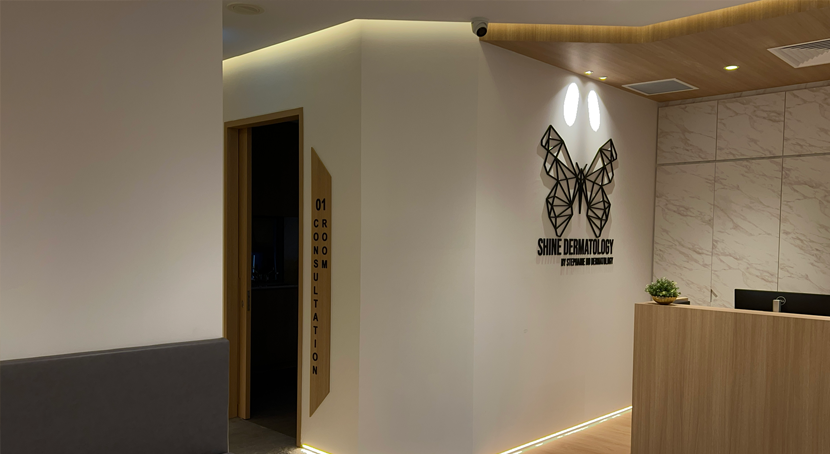Full-Spectrum Solutions for Redness & Acne Scars
Our approach includes a combination of:
-
Sun protection – to prevent further inflammation and pigmentation.
-
Topical treatments – such as prescription-grade anti-redness and scar creams, and medical-grade tretinoin.
-
Laser treatments, including:
-
Pulsed dye laser (VBeam) – targets vascular redness.
-
Picosecond laser (PicoWay) – treats pigmentation and residual marks.
-
Ablative fractional CO2 laser (SmartXide) – resurfaces textured scars.
-
Microneedling radiofrequency (Sylfirm X) – promotes collagen remodeling.
-
Injectables, including:
-
Polynucleotide injections – to improve skin quality and healing.
-
Collagen biostimulators – to stimulate long-term dermal repair.
-
Injectable hyaluronic acid – to restore volume and hydration.
While a holistic treatment plan may involve all of the above, this article will focus in-depth on laser therapy, a cornerstone of our approach to acne scarring and facial redness.
What Are Laser Treatments for Redness & Acne Scars?
Laser treatments are non-invasive procedures that use controlled light energy to target specific skin concerns. At Shine Dermatology, we utilize multiple laser modalities based on the nature of the redness or scarring:
-
Vascular Lasers (e.g., VBeam) – reduce redness by collapsing abnormal blood vessels.
-
Picosecond Lasers (e.g., PicoWay) – lighten pigmented scars by breaking down melanin.
-
Ablative Lasers (e.g., Fractional CO2) – smooth textural scars by stimulating collagen regeneration.
Each modality is selected based on your skin tone (Fitzpatrick Types I–VI), scar morphology, and treatment goals.
How Do Laser Treatments Work?
Laser energy targets chromophores in the skin—like hemoglobin (redness) or melanin (pigmentation)—without damaging surrounding tissue. Here's how each laser works:
-
VBeam: 595 nm wavelength penetrates up to 1.5 mm to coagulate capillaries and reduce erythema.
-
PicoWay: Uses ultra-short pulses (450–750 ps) to shatter pigment particles for lymphatic clearance.
-
Fractional CO2: Delivers microthermal zones at 10,600 nm to resurface skin and stimulate neocollagenesis.
Key Treatments & Their Applications
|
Laser |
Primary Use |
Treatment Interval |
Expected Outcomes |
|
VBeam |
Vascular redness (PIE, rosacea) |
3–5 sessions, every 4–6 weeks |
75–90% reduction in redness |
|
PicoWay |
Pigmentation (PIH, acne marks) |
4–6 sessions, monthly |
50–70% clearance of pigment |
|
Fractional CO2 |
Textural acne scarring |
1–3 sessions, every 8 weeks |
30–50% reduction in scar depth |
Each treatment is calibrated for optimal energy delivery and minimal side effects, particularly in Asian skin types.
Why Choose Laser Treatments?
Laser modalities offer:
-
Vascular specificity – targets redness with minimal risk to pigmented skin.
-
Pigment precision – reduces brown spots without thermal damage.
-
Collagen remodeling – improves texture and firmness over time.
Benefits include minimal downtime, progressive results, and suitability for most skin types when administered by experienced dermatologists.
When to Consider Laser Treatment
Laser therapy may be recommended for:
-
Persistent redness – post-inflammatory erythema lasting over 3 months.
-
Stubborn pigmentation – PIH that resists topical treatments.
-
Textured scarring – atrophic scars (rolling or boxcar) that affect skin smoothness.
-
Rosacea or vascular lesions – including broken capillaries and flushing.
Contraindications include active acne, recent isotretinoin use (within 6–12 months), or a history of keloid formation.
Treatment Timeline & Recovery
|
Laser |
Downtime |
Recovery Tips |
|
VBeam |
12–24 hrs of mild redness |
Cold compress, SPF 50+, avoid heat/sun for 48 hours |
|
PicoWay |
Temporary darkening, 7–14 days |
Gentle skincare, no scrubbing, strict sun protection |
|
CO2 Laser |
5–7 days of redness/peeling |
Petrolatum jelly, ceramide moisturizers, avoid sun 6 wks |
All treatments require post-care with broad-spectrum sunscreen and hydrating topicals.
Risks & Safety Measures
With proper settings and experienced hands, risks are minimized. Common side effects include:
-
Purpura (VBeam) – resolves in days.
-
Post-inflammatory hyperpigmentation (PicoWay/CO2) – mitigated with priming and sun avoidance.
-
Prolonged erythema or milia (CO2) – prevented with good wound care.
We perform a thorough consultation and skin assessment before each treatment cycle.
FAQs
1. Which laser is best for red vs brown acne marks?
VBeam is ideal for red marks (PIE), while PicoWay treats brown pigmentation (PIH). They are often combined.
2. Are laser treatments painful?
Most patients rate the discomfort as mild (≤3/10). Topical numbing and cooling sprays help minimize pain.
3. Can I wear makeup after treatment?
Yes—immediately after VBeam/PicoWay. After CO2, wait 5–7 days until healing completes.
4. Are lasers safe for darker skin types?
Yes. PicoWay and low-density CO2 settings are tailored for Fitzpatrick IV–VI skin tones.
5. How long do results last?
VBeam and PicoWay offer long-term results with maintenance. CO2 results may last 3–5 years.
6. Can I combine treatments?
Yes. Lasers can be combined with microneedling, injectables, or skincare for enhanced results.
7. What’s the downtime for CO2?
Typically 5–7 days. Strict sun protection is crucial during recovery.
8. How do I prepare for treatment?
Stop retinoids 2 weeks prior. Use SPF 50+ and pigment primers like hydroquinone 4% if needed.
9. Are results immediate?
Initial improvements are visible in weeks, with continued improvement over 3–6 months.
10. Can I do this if I’m prone to pigmentation?
Yes, but pre-treatment priming and post-treatment care are critical to prevent PIH.
Book a Consultation Today
Shine Dermatology offers individualized scar revision and redness treatment plans led by board-certified dermatologists. Contact us today to explore the most effective laser treatment for your skin goals.



